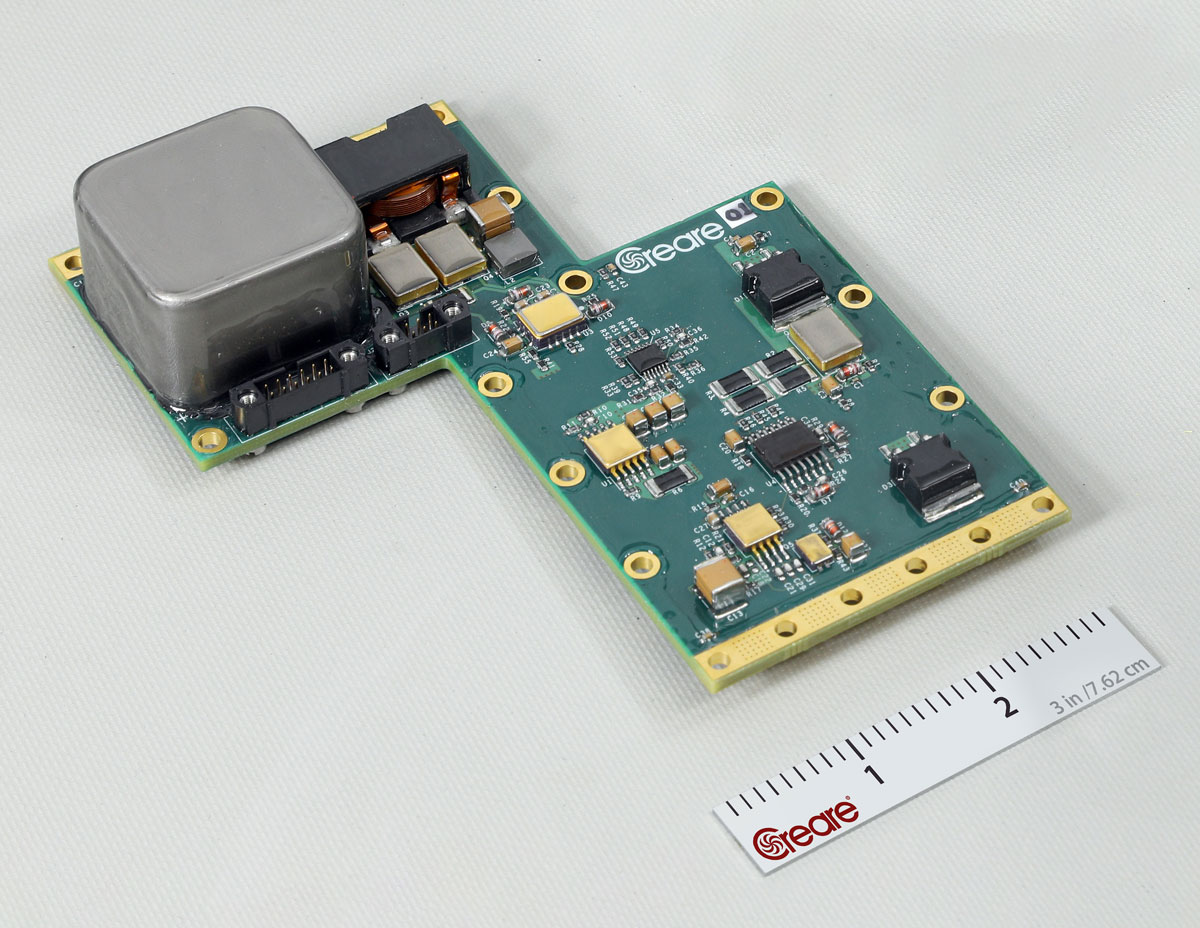Creare Spaceflight Cryocooler Tech Launches
Creare and West Coast Solutions’s spaceflight cryocooler technology is enabling critical measurements for on-orbit, infrared astronomy. The June launch is the fourth mission deploying our miniature cryocooler control electronics package, this time powering the optics cooling system on board NASA’s orbiting ARCSTONE Observatory.
On June 23, a SpaceX Falcon 9 launched the Transporter-14 mission to low Earth orbit from Space Launch Complex 4E at Vandenberg Space Force Base in California. The Transporter-14 mission successfully orbited NASA’s ARCSTONE spacecraft (https://science.larc.nasa.gov/arcstone/), which is designed to demonstrate the feasibility of using the Moon as a calibration source for infrared astronomical measurements. A key component to the infrared optical system on this satellite is the cryogenically-cooled infrared focal plane assembly. The cryogenic cooling system comprises an AIM SF070 cryocooler and DCE 100 drive electronics, and a boost converter power supply and active ripple filter that were designed by Creare and West Coast Solutions and fabricated by Creare. The power supply and ripple filter both convert the on-board satellite battery power into a higher, stable operating voltage to drive the cryocooler, and isolate the satellite electronics from any electrical noise created in the cryocooler.
As of July 3rd, the ARCSTONE satellite had successfully completed commissioning, has been operating stably for several days with expected efficiency, and is transitioning to operational acquisition of science data. Data collection is expected to continue until the satellite re-enters the atmosphere in 1.5 years or as long as on-board battery systems allow.
The ARCSTONE active ripple filter has now been successfully demonstrated in space and serves as the baseline design for the high-power variant of Creare’s Miniature Cryocooler Control Electronics (MCCE-HP1), which is currently in production at Creare. This complements our existing miniature cryocooler control electronics for tactical space that has already been successfully employed for 100W-class cryocoolers on multiple current missions.
